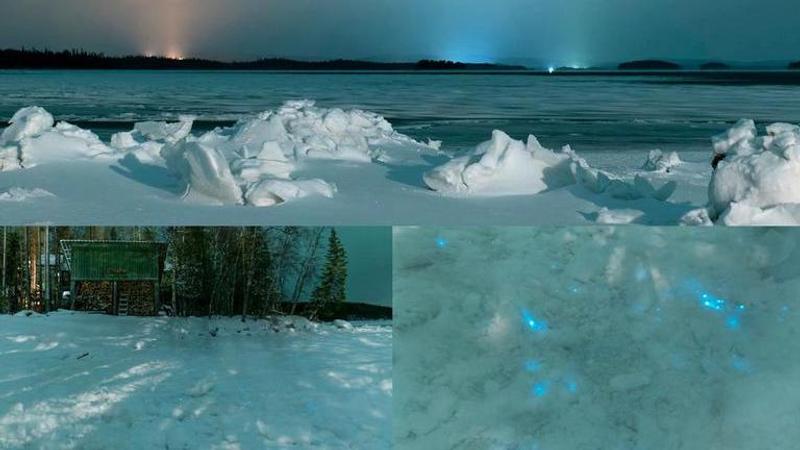Published 21:48 IST, December 26th 2021
Scientists finds 'glowing snow' in Russian arctic, explain phenomena causing it
A new and uncommon phenomenon involving the glowing of snow has been observed by scientists from Moscow State University's White Sea biological station.

A new and uncommon phenomenon involving the glowing of snow has been observed by scientists at the Moscow State University's White Sea biological station. Vera Emelianenko - a biologist - claimed that she was out for a walk with a colleague when they saw a strange shimmering in the snowbanks, as per a report by Sputnik. She then asked her colleague and the station's photographer, Alexander Semenov, to photograph the odd lights. Later, Semenov posted photos of the stunning phenomena on Facebook. Emelianenko claims that they flashed a faint blue when she touched them.
Alexander Semenov who took the photograph of the phenomenon explained that they never expect to find beauty right beneath their nose that they didn't know existed. While sharing the image on Facebook, Alexander stated that now he knows that there is glowing plankton beneath the snow as well. He further stated that this was taken at the White Sea Biological Station during a blizzard. He also said, walking down the littoral, they noticed bright objects beneath their feet, which glow-in-the-dark. He then expressed how captivated he was by its beauty.
Copepods: Organisms that emit light
Vera Emelianenko took some snow and examined it under a microscope to discover that the glow was caused by small bioluminescent organisms known as copepods. Bioluminescence is the emission of light by a living organism. According to National Geographic, Ksenia Kosobokova who is a specialist on Arctic marine zooplankton at Russia's Academy of Science in Moscow stated that these copepods were trapped in a powerful current in the White Sea through the holes in the ice and snow.
Copepods, sometimes known as sea bugs, are only a few millimetres long. Some estimates that the copepods make up the majority of the biomass in the ocean and they are passive swimmers. Copepods normally live 80 to 300 feet below the ocean's surface during the day and climb to a few feet above the surface during the night.
However, some scientists feel that colonies of dinoflagellates, which is single-celled algae that exhibit bioluminescence are more likely to explain the luminous snow, according to Metro. Jrgen Berge, who is an Arctic University of Norway professor, has discovered similar deposits in the snow on the coastlines of the Norwegian archipelago, Svalbard.
(Image: @AlexanderSemenov/Facebook)
Updated 21:48 IST, December 26th 2021




